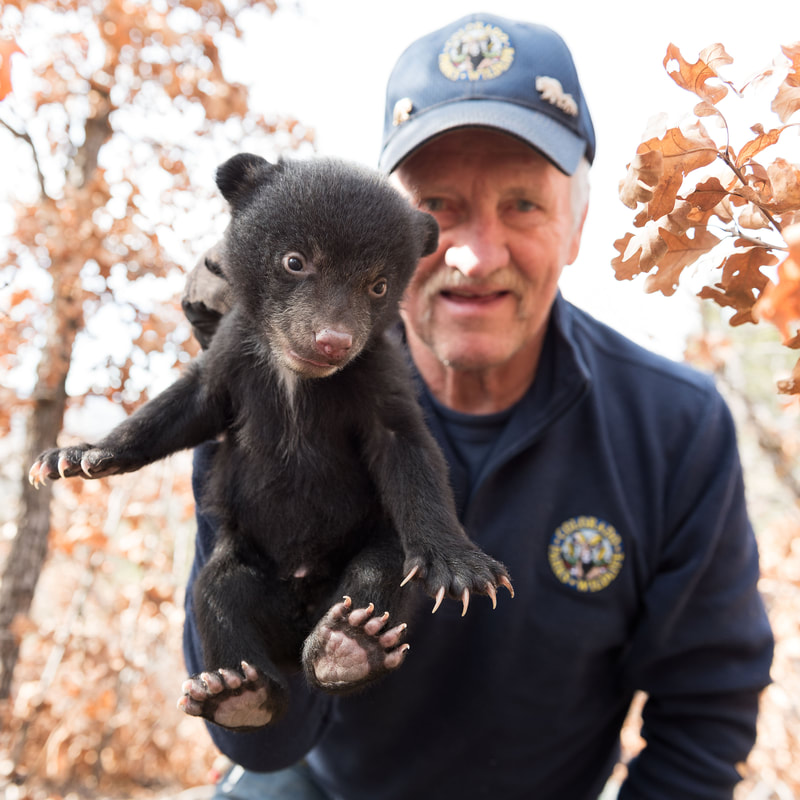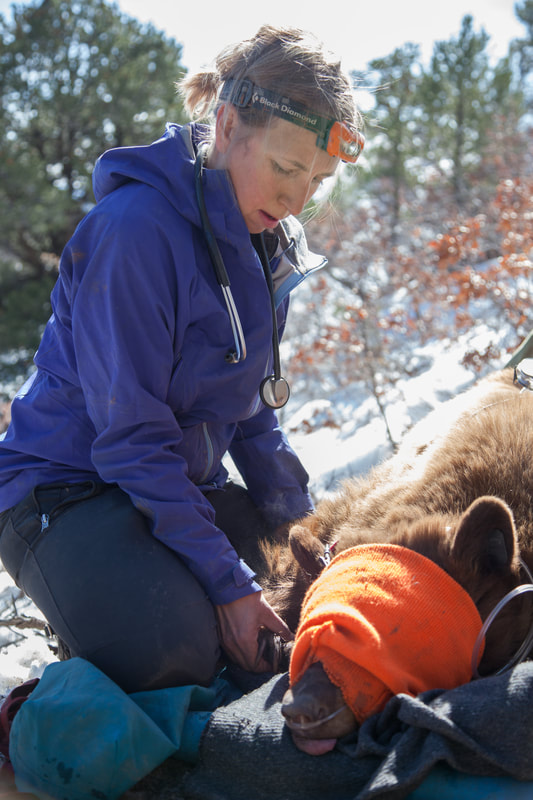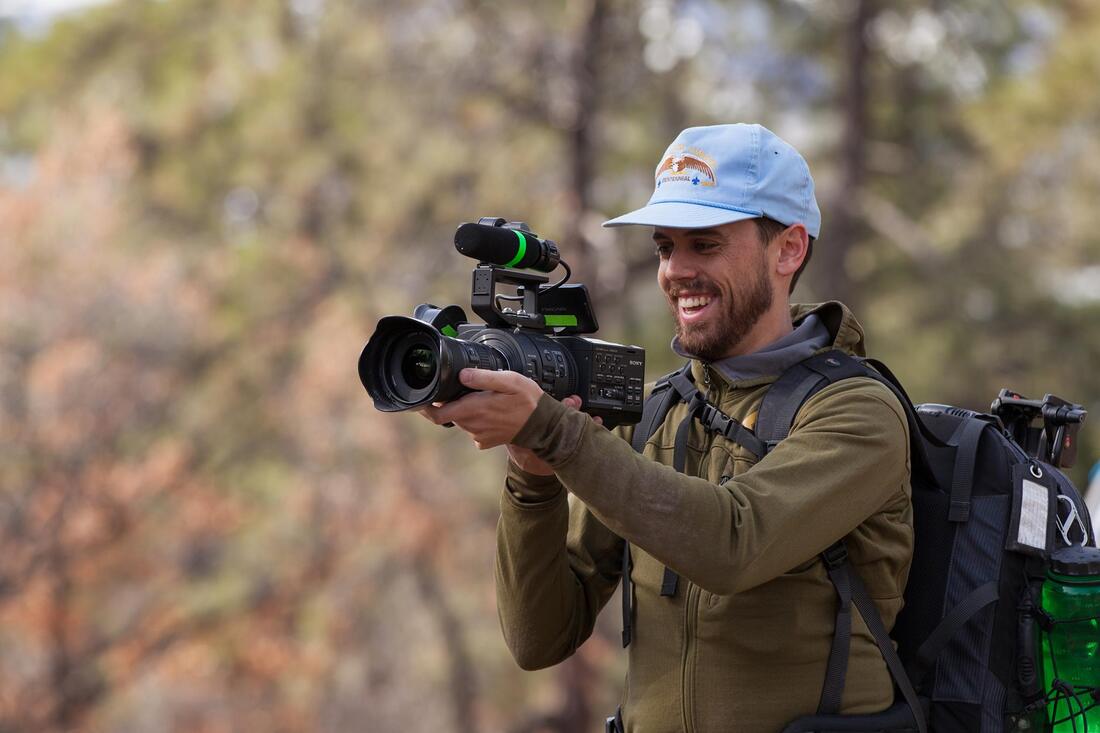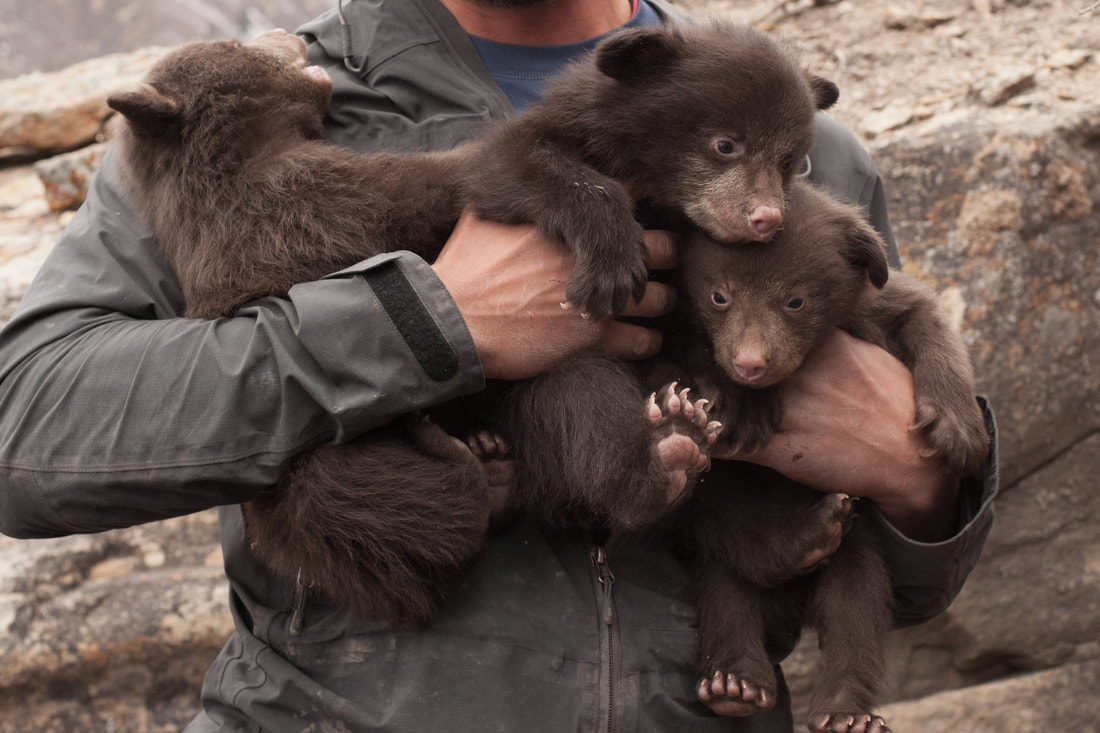|
We reached out to our Jackson Wild Media Awards filmmakers to ask them five questions about the experience of making their films.
What inspired this story? Director and Producer Dusty Hulet: When I was a kid, my dad took me with him to volunteer on an Idaho Fish & Game deer study. To my twelve-year-old amazement, it was our job to hide in the bushes, then run and tackle the deer that were being herded into nets by a helicopter. We held them down just long enough for a wildlife researcher to put a radio collar on them, before releasing them back into the wild. As a twelve-year-old, it was the craziest thing I’d witnessed under adult supervision, and it really stuck with me as I made my way into the world of film. A few years ago, I was finally able to go back to Idaho to film a similar deer study. In doing so, I caught wind of Colorado Parks and Wildlife researchers crawling headfirst into occupied bear dens, armed only with handheld tranquilizers on telescoping poles—tranquilizers that took 15 minutes to do anything. I convinced the researchers to let me film them for a just a couple of days, then a couple more. Things snowballed from there. Four years later, what was to be a segment in a short film is the standalone feature, Bears of Durango. Describe some of the challenges faced while making this film/program? DH: I was really close to puking my guts out by the time we got to the first den. The Durango study’s bears didn’t always den in especially convenient locations, and the first one I visited was up several thousand feet of snowy, trailless Rocky Mountain. The researchers, whose regular duties include visiting bear dens in Colorado’s deep winter snow, are what you might call “ultra fit.” It’s one thing to even keep up with them, it’s another thing to haul all the camera gear fast enough to get ahead of them, then not pass out while you try to control your breathing long enough to hold a stable shot. What did you learn from your experience making this film/program? DH: The battle is ongoing, but this process has made it very clear to me that every indie film is a miracle. Doesn’t matter how bad it is. It’s really tough to make something at all, let alone something good. How do you approach storytelling? DH: With Bears of Durango, it was important to me that the researchers’ voices carried the story. No narrator, no host, no David Attenborough (though I’m happy to talk with you about my next project, Sir Dave). Without exception, we found the researchers doing this work to be fascinating, vibrant characters. Though you hear my voice a few times in the film, the story is theirs, and you hear it from them, expressed in their own way. Beyond that, humor plays an interesting role in the film. Bears of Durango ventures into heavy issues—climate change, human development, and mounting pressures on wildlife populations.
What impact do you hope this film/program will have?
DH: There’s much to say on this one, but I’ll leave it at this: My four nieces have plenty of Miley Cyrus to look up to. What they need is more Dr. Heather Johnson. They need to see that they can be brilliant scientist leaders, wrestle bears twice their size, and positively impact the world. Were there any surprising or meaningful moments/experiences you want to share? DH: While filming in the back of the first den I visited—two bears between me and the exit—a researcher straddling the two bears explained to me how important it was that I take care not to touch the semi-sedated sow’s nose, as I climbed over her and her yearling. “Bears noses,” I was told, “are extremely sensitive.” The researcher, Twistered her way over the bears to the other side of the den, then led the way through the 14-inch belly-crawl gap in the boulders, and up the six foot tunnel in the snow that the researchers had dug to the den’s entrance. On her way out, her boot slipped off the wall, and popped the sow right in the nose. The sow’s ears, silhouetted against the den’s opening, slowly lifted to an alert position. It was a different kind of “peak experience,” with pure adrenaline coursing as I straddled her and her yearling before being dragged out the tunnel by the researchers. The sow didn’t fully wake up until we were packed up and long gone, but it made for a very memorable first shooting day. What next? DH: We’re not out of the woods yet. There’s much to do with Bears of Durango—some interesting challenges, and some amazing opportunities. We hope that our time at Jackson Wild will us connect with those who can help us take the project to the next level. Those interested in getting involved or following along with our journey are invited to visit bearsofdurango.com.
0 Comments
Leave a Reply. |
Archives
March 2024
Categories
All
|
Contact UsJackson Wild
240 S. Glenwood, Suite 102 PO Box 3940 Jackson, WY 83001 307-200-3286 info@jacksonwild.org |





 RSS Feed
RSS Feed